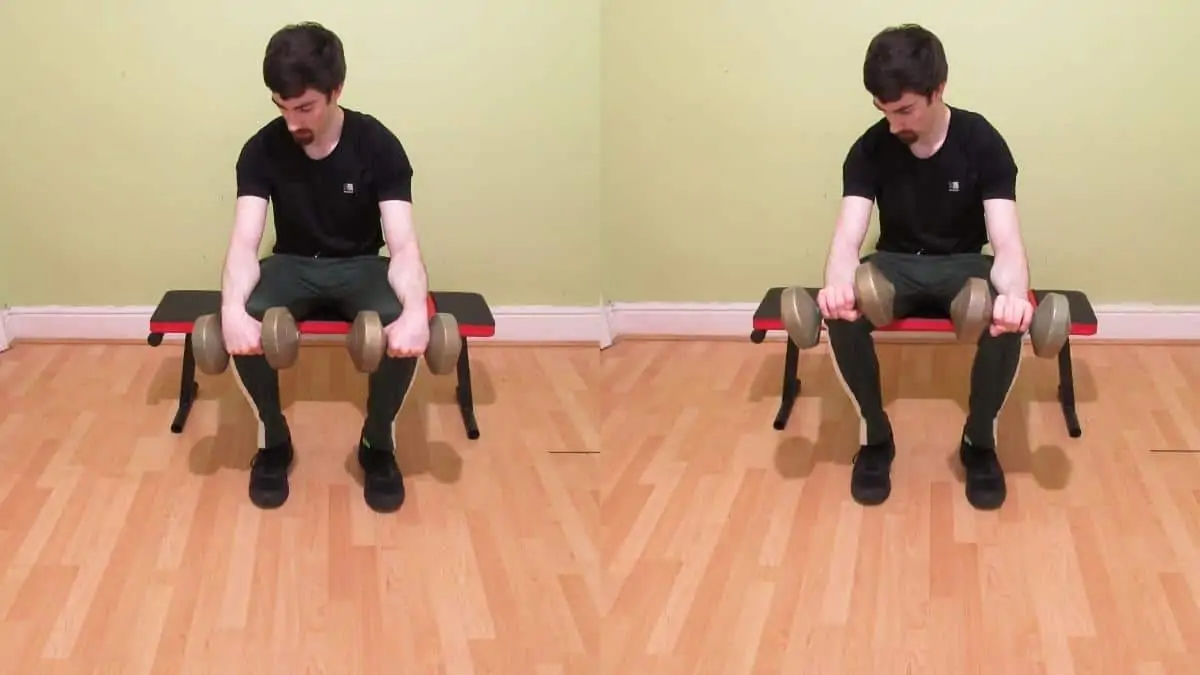The lower arms need more than just regular forearm curls to reach their full potential. Forearm training should consist of roughly equal work for both the forearm flexors and the forearm extensors.
This guide, which covers the palms down dumbbell wrist curl, focuses on the often neglected extensor muscles. I’ll show you the step-by-step technique and reveal some crucial mistakes that you must avoid if you want to make gains and stay injury-free.
How to do a palms down dumbbell wrist curl
- Hold a light dumbbell in each hand and kneel next to a weight bench.
- Rest the underside of your forearms on the bench and let your hands hang off the edge.
- Lower the weights toward the floor until you feel a good stretch on the tops of your forearms.
- Bring the weights back up by extending your wrists.
- Aim to raise your hands higher than your forearms for the strongest contraction.
- Repeat for 2-4 sets and stick to high reps (12-20)
Palm down wrist curl mistakes
Doing the palms-down wrist curl over a bench helps to minimize cheating because your lower arms are stabilized. However, for the best results in this exercise, make sure to avoid these sloppy mistakes.
Using low reps
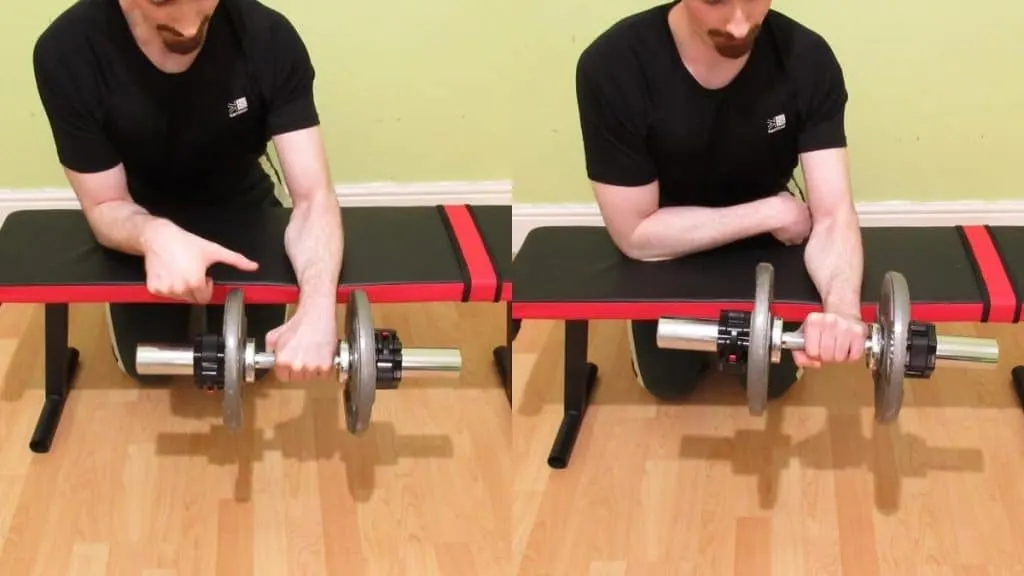
Like many other dumbbell exercises for forearms, the palms-down wrist curl over a bench is best performed for high reps because the wrist extensors are very slow twitch.
Moreover, by lifting with low repetitions, you naturally allow yourself to use heavier weights. This is a major pitfall for training the forearms because the wrist joint is easy to injure due to its relatively small size.
As such, you want to stick to high reps. While you might think that lifting heavy is the way to go, since the wrist curl range of motion is so small, you actually need to use high reps to get results because you simply don’t get enough time under tension from doing low reps.
Overstretching your wrists
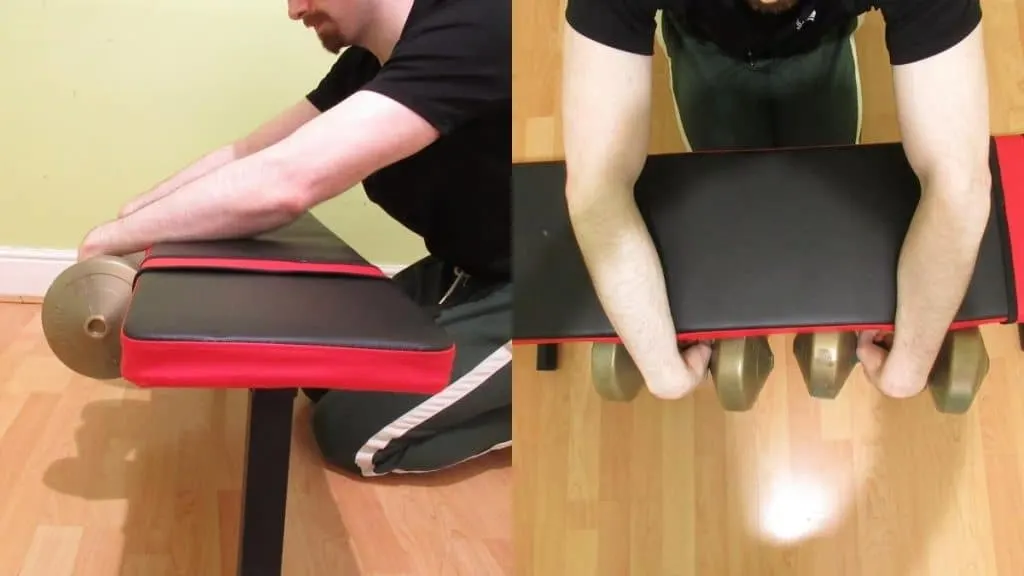
You might think that by allowing your wrists to hang parallel with the side of the bench that you’re making the exercise more effective.
Actually, the opposite is true.
By lowering the weights too far down, you’re actually disengaging the wrist extensors and allowing them to rest. This reduces your muscle pump and limits the number of muscle fibers that are recruited because by resting, you’re also staying further away from muscular failure and the massive amount of motor units that reaching failure (or close to it) engages.
Also, by overstretching, you’re subjecting your wrist joints to excessive tension that can lead to pain and overuse injuries if you regularly repeat this dangerous practice.
See also: kettlebell workout for forearms │best forearm exercises for women
Neglecting the contraction

While there’s no need to raise the dumbbells as high as they’ll go, you always want to raise your hands slightly above your forearms to get a strong contraction.
After all, the palm down wrist curl works the forearm extensors—they’re meant to extend your wrists upwards. So by neglecting the all-important contraction, you’re essentially cutting the effectiveness of the exercise in half.
Not controlling the weight
Let your muscles do the lifting. Don’t just drop the weights on the eccentric or lowering phase of the rep because it robs your muscles of tension.
Plus, letting the weights plummet to the ground is a surefire way to irritate your wrists.
Instead, control each and every rep so that your forearms remain engaged throughout the whole movement. By doing this, you can actually get results from fewer sets because each set is far more effective when you execute it with the proper form.
That’s the power of the mind-muscle connection. [1]
Seated dumbbell palms down wrist curl alternatives
There are some great alternatives to palms down dumbbell wrist curls that you can try. Perhaps you don’t have dumbbells, or maybe you just want to add variety to your workout routine. Either way, the links below are jam–packed with technique tips and tutorials to get you real results in the gym.
- Barbell forearm curl
- Dumbbell wrist twist
- EZ bar forearm curl
- Plate wrist curls
- Reverse barbell wrist curl over a bench
- Reverse forearm curls
- Single dumbbell forearm curl
- Standing reverse forearm curl
- Standing barbell wrist curl
Palm down barbell wrist curls over a bench
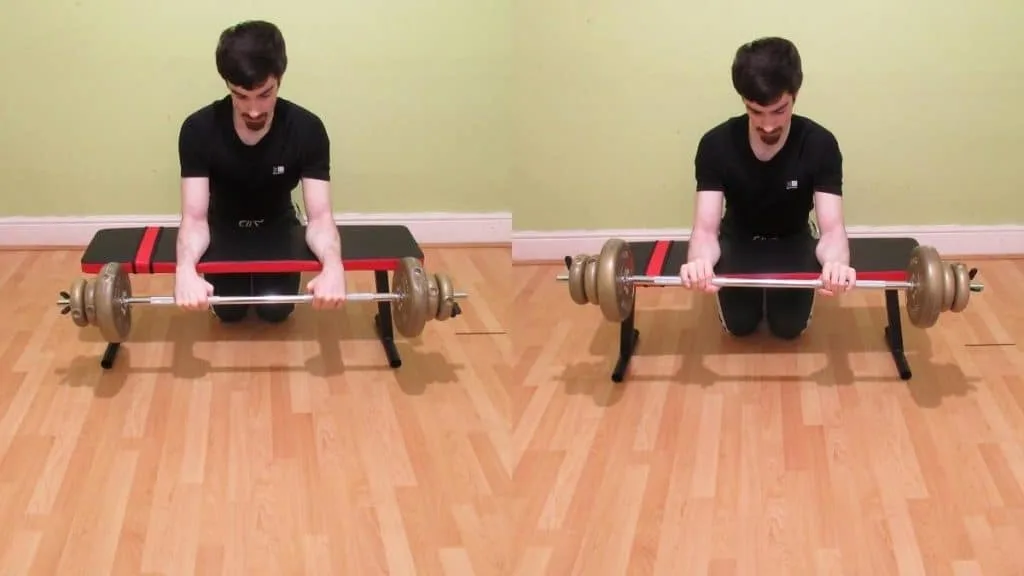
The palm down barbell wrist curls over a bench drill is exactly the same as the dumbbell version, except that you can use slightly heavier weights. The trade-off is that you’re more likely to develop muscular imbalances when lifting with barbells since your stronger side may naturally dominate the movement.
As before, rest the underside of your forearms on a weight bench and allow your hands to hang off the edge. Lower the bar towards the gym floor until you feel a stretch, and then immediately bring the weight back up by extending your wrists, making sure to contract your forearms at the top of the rep.
Behind the back wrist curls

Most people do behind the back wrist curls with barbells, but it’s also possible to use dumbbells and enjoy the same benefits. This drill produces a particularly potent forearm contraction because the weight is heaviest where the forearms are in their shortest position.
It’s widely considered as a mass builder for the lower arms, especially because you’re training the flexors (the meat of the lower arms), so don’t be afraid to use sets of 8-12 for this exercise.
Cable wrist curls
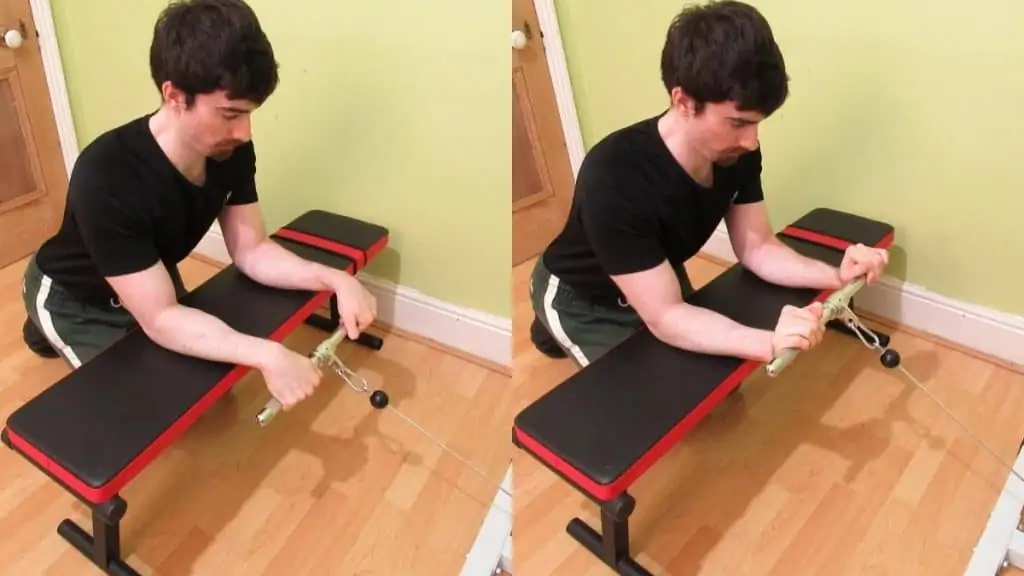
Cable wrist curls are easy to set up because you don’t have to load weight onto a bar or wait for particular dumbbells to become available. You just put the pin in the machine and lift.
Also, cables enable you to perform supersets for the flexors and extensors and save time because you only need one low pulley. With free weights, you often need two bars and sets of dumbbells for supersets, which is particularly challenging to set up in a crowded gym.
Read more: forearm roller
The verdict: How effective are palms down dumbbell wrist curls?
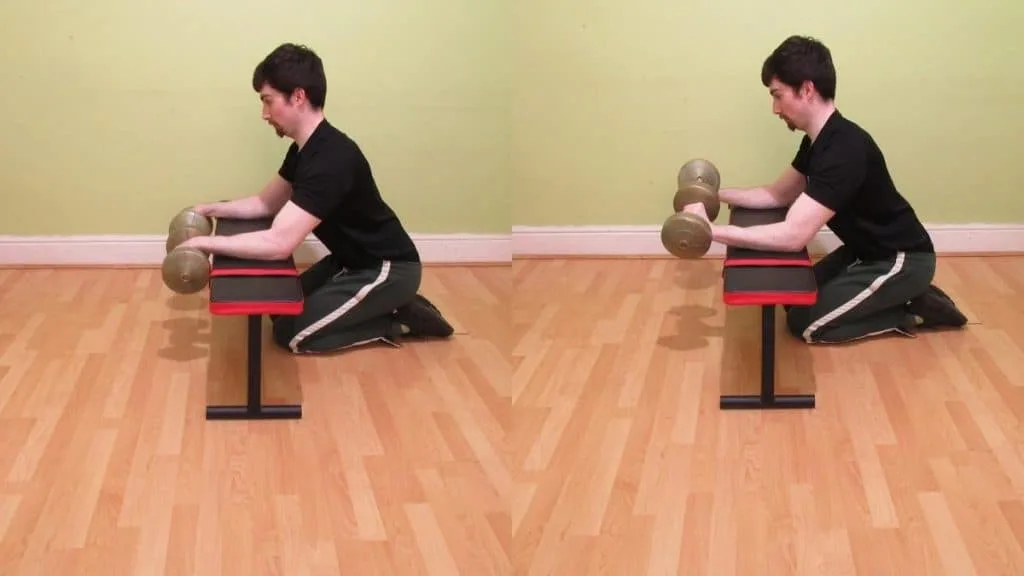
Palms down dumbbell wrist curls work the one area that most lifters all too often neglect: The forearm extensors. [2] As mentioned, this muscle group sits on top of your forearm and helps to bend the wrist.
By doing the palms down dumbbell wrist curl over a bench, you minimize potential cheating while also building more proportional lower arms.
If you don’t have access to a weight bench, then you can also do the seated dumbbell palms down wrist curl by resting the weights on your lap or by hanging your hands off the edge of a desk or table. The latter variation is useful if you train at home and want to develop stronger, more functional forearms.
References
- Calatayud, J., Vinstrup, J., Jakobsen, M. D., Sundstrup, E., Colado, J. C., & Andersen, L. L. (2017). Mind-muscle connection training principle: influence of muscle strength and training experience during a pushing movement. European Journal of Applied Physiology, 117(7), 1445–1452. https://doi.org/10.1007/s00421-017-3637-6
- Hägg, G. M., & Milerad, E. (1997). Forearm extensor and flexor muscle exertion during simulated gripping work — an electromyographic study. Clinical Biomechanics, 12(1), 39–43. https://doi.org/10.1016/s0268-0033(96)00049-6

